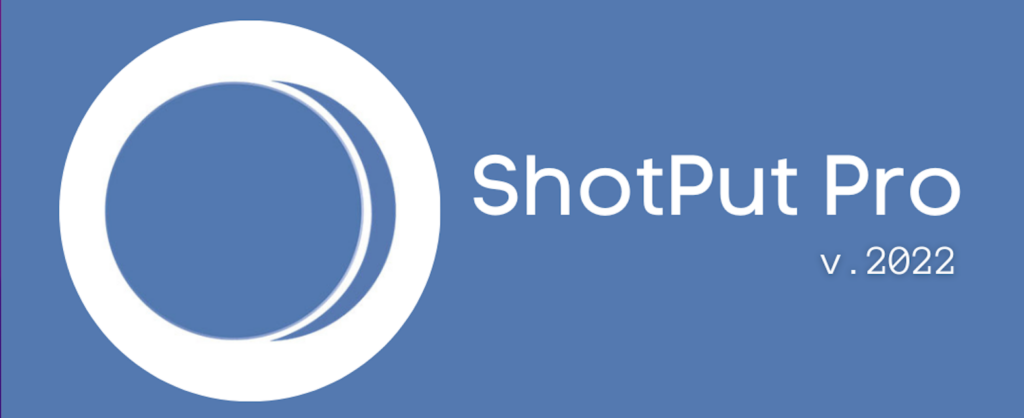
With the recent release of ShotPut Pro version 2022, we here at Imagine Products want to assist our users and provide you guys with some tips and tricks that you can use on ShotPut Pro that you may not already know of. So, here are some Software Solutions:
1) Use custom tokens in your naming scheme.
Using custom tokens in your naming can be useful because it can be utilized repeatedly once it is created. And, when creating the custom token, you can customize however you need to and can assign it a value.
To learn how to create custom tokens or to learn more information about ShotPut Pro’s naming scheme, watch this video.
Here is a quick overview of what using the custom token looks like in ShotPut Pro:
First drag the “Custom Token” token into the box.
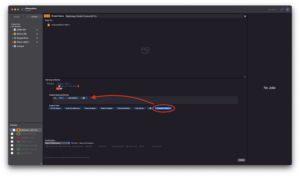
Then, on the Custom Token button, click on the arrow on its right to reveal a drop down menu.

From this drop down menu, click “Edit”.

A pop-up menu will show where you can edit the name/value of the Custom Token.
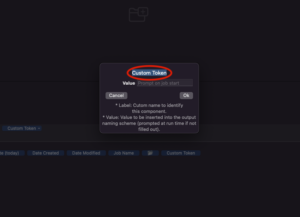
For this example, we will rename the “Custom Token” into “Production Type”. You can also assign the custom token a value. We will assign it the value “TV Commercial”.
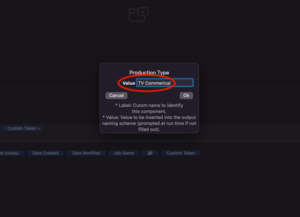
Now once you click “Ok”, the changes will show in the box.

2) Customize your PDF report!
ShotPut Pro v. 2022 provides its users with 4 customization options specific to the PDF reports. These options include the following:
#1: Limit items in PDF report to files only: Only files recognized as media files are added into the report. Exclusions include accessory files (i.e. image/audio/text files).
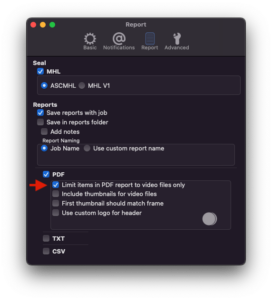
#2: Include thumbnails for video files: You can choose anywhere from 1-10 thumbnails to include in the PDF report.
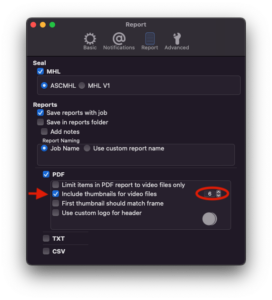
#3: First thumbnail should match frame: Rather than ShotPut Pro grabbing a thumbnail from an equally distributed location, the first thumbnail will be the very first frame of the video.
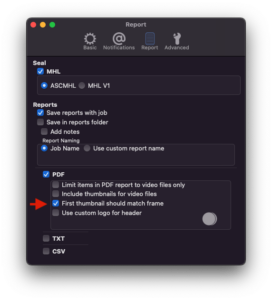
#4: Use custom logo for header: You can select a PNG, tiff or jpeg files to use as the logo on your reports.
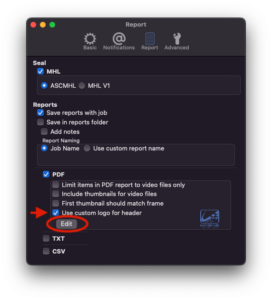
3) Learn how to create and change the date format.
Learning about how date formatting in ShotPut Pro works is useful because it can save you lots of time and effort in the future. Watch this video that explains all about date formatting in ShotPut Pro.
Here’s a quick rundown of how date formatting works:
The simplest way to change date formatting is to use the pre-made common formats. These formats include Simple and Standard American and Simple and Standard European formats.
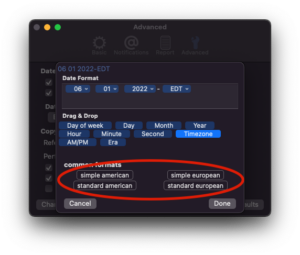
In the Preferences panel, click the Advanced tab. Then, click “Edit format”.
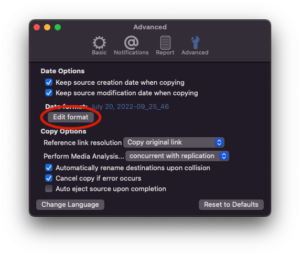
Then you’ll be presented with a box that contains the default date format and tokens that you can drag and drop into the box.
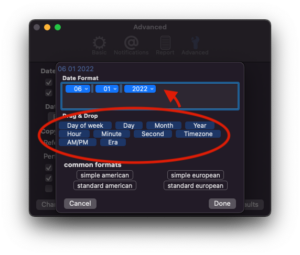
You can also use custom text to further personalize your date format by typing in punctuation.
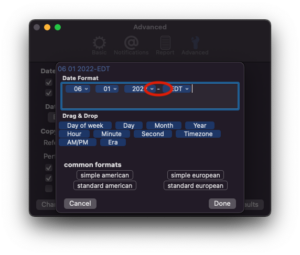
Typing also autocompletes tokens and adds them in without having to drag and drop. For example, typing in the letter D prompts you to autofill a couple tokens by clicking enter.
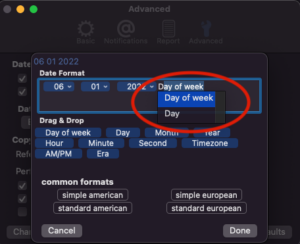
Within many of the individual tokens, you can bring up a dropdown menu and further customize how they look. For example, in a token called “Month”, you can choose from a number of options, such as its full name, its abbreviation, or a number.
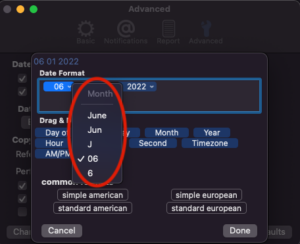
4) Learn how to navigate the Job Details View and how to interpret your report.
Through learning how to interpret and use the Job Details View of ShotPut Pro, you can improve your understanding of the details of the offloads you do and the phases your offloads go through.
Here’s a simple walk-through of the Job Details View:
First, select either Simple Mode or Preset Mode.
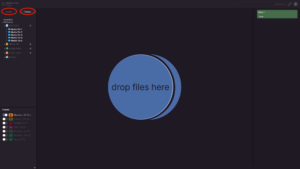
In this example, I will select Preset Mode and use/enable an existing preset from the bottom left. Then, drag and add a file to offload.
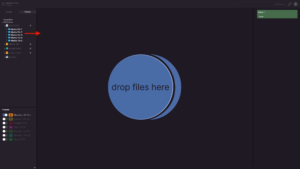
Now give it a job name, then click run in the upper right corner.
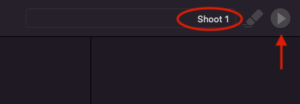
To bring up the Job Details View, click anywhere on the completed job.
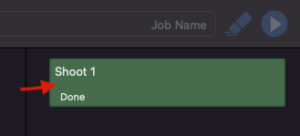
View the job name and the mode used in the upper left of the Job Details View. See the specifics of the job farther down. These specifics include information on how many files, folders, sources, and outputs were involved in the job.
Click the arrow to the left to see additional information on the checksum types used.
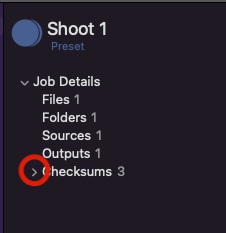
The Job Progress panel is on the righthand side. This allows you to see how much of the file has been replicated and verified and how much is left remaining. For longer jobs, this view will update in real time for each stage.
During the Replication stage, your files are read from the source and are simultaneously written to each destination.
After Replication, your offload will be verified. This means checksums will be generated for each destination and compared against the generated source checksums to confirm file integrity.
Finally, in the Report phase, you’ll be able to see how many reports have been generated, and how many are still left. The number of reports is based on the options you selected in the Preferences menu.

In the lower half of this page is the Job Flow View.
Starting with the file or files you are offloading, it then shows the source, the device being used, and the destination.
To the right of the destination is a preview of the folder name created by your offload. This visual is particularly helpful for keeping track of destinations when offloading to multiple drives.

To access the reports for your jobs, click the blue icon next to the report progress bar in the upper right.

This replaces the Job Flow View with one containing your reports.
By selecting the report name to the left, you can look through each of the reports you have enabled.
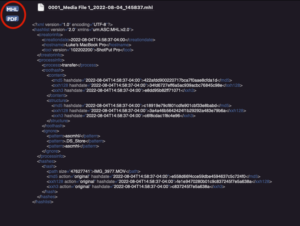
You can also navigate to the report in Finder by clicking on the icon for the specific report you are viewing. This is an incredibly useful feature and has now been added directly into ShotPut Pro so you won’t have to leave the app to view them.
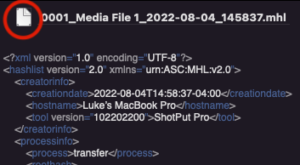
If you’d like more information on setting up your Report Preferences, or on interpreting your PDF report, check out our videos covering both topics:
So there you have it, 4 Software Solutions to help you navigate ShotPut Pro v. 2022 easily. For more information, read other blogs on our website or watch videos on our YouTube channel.